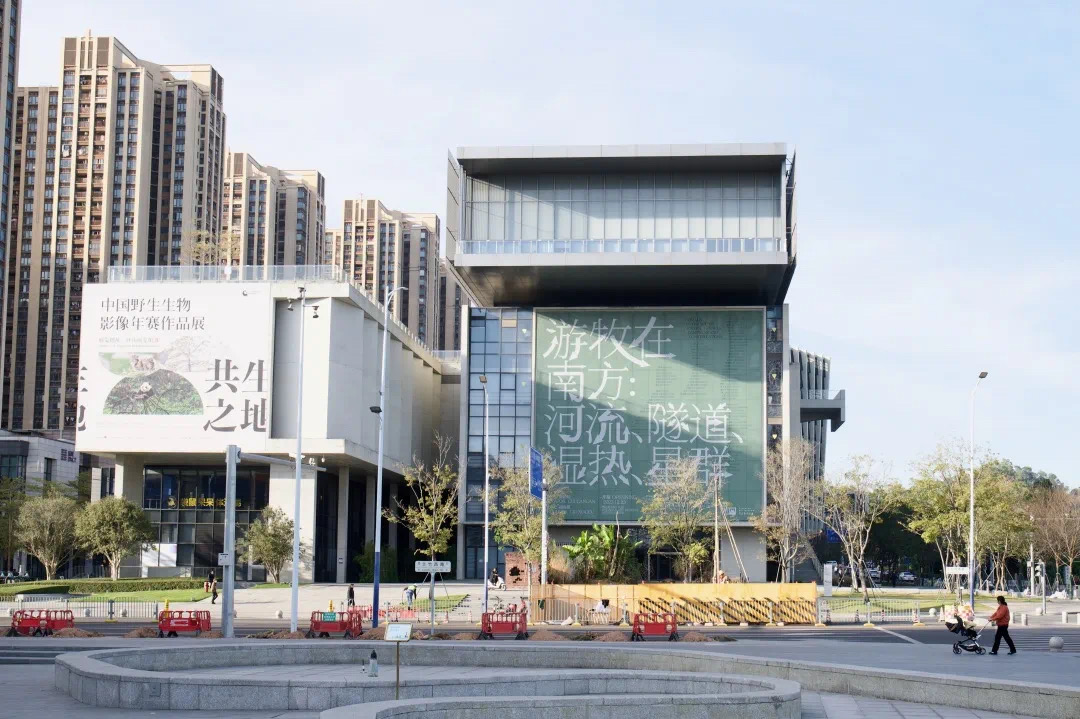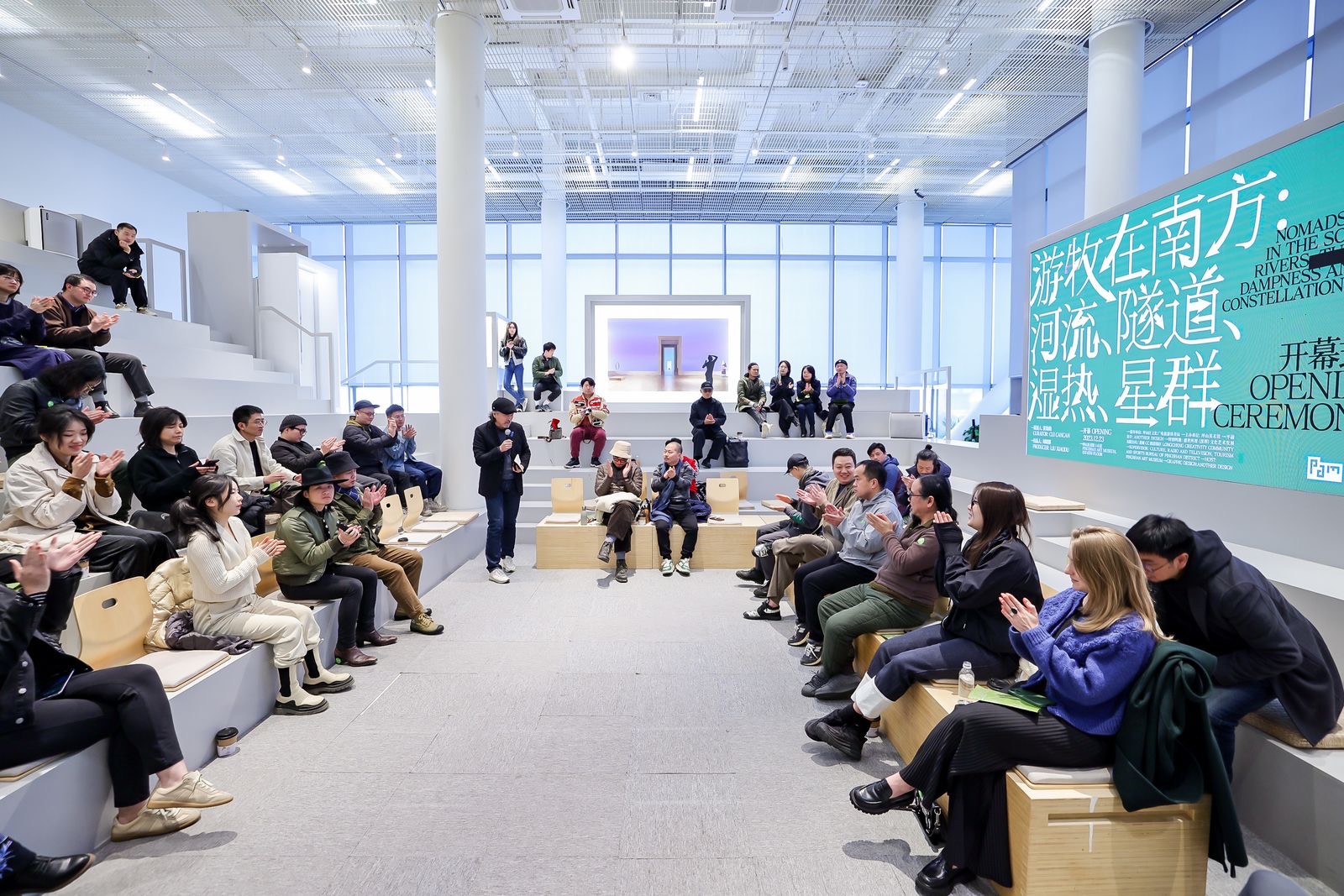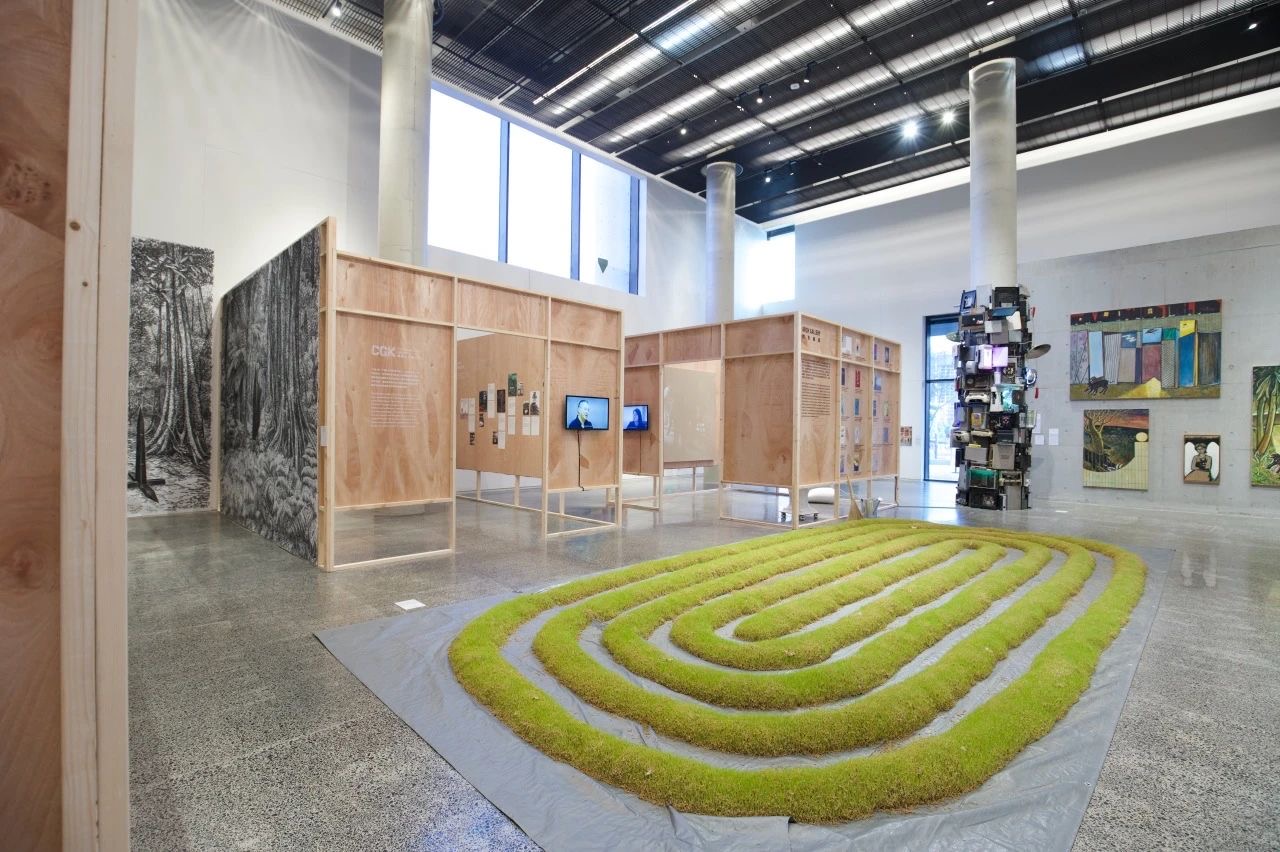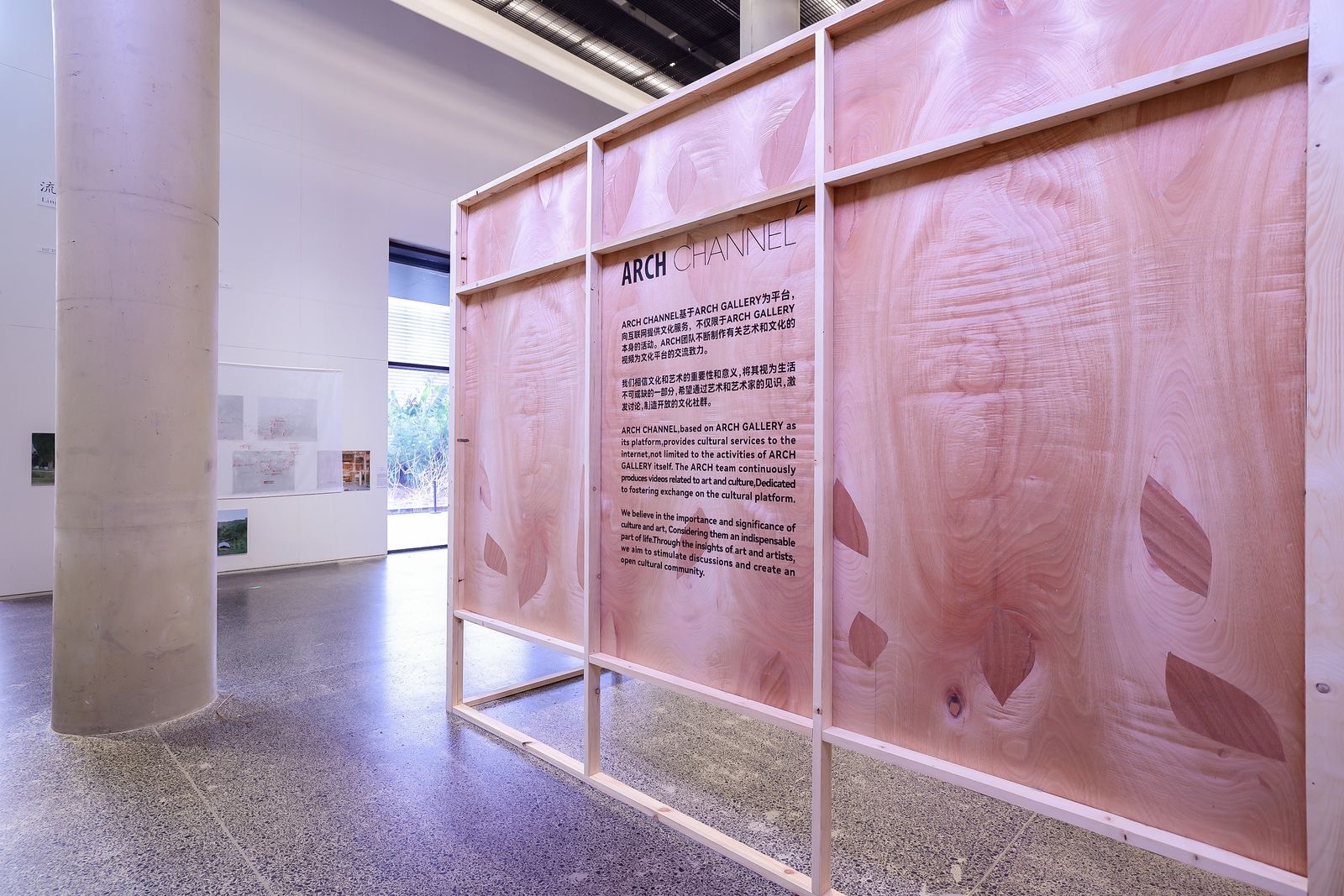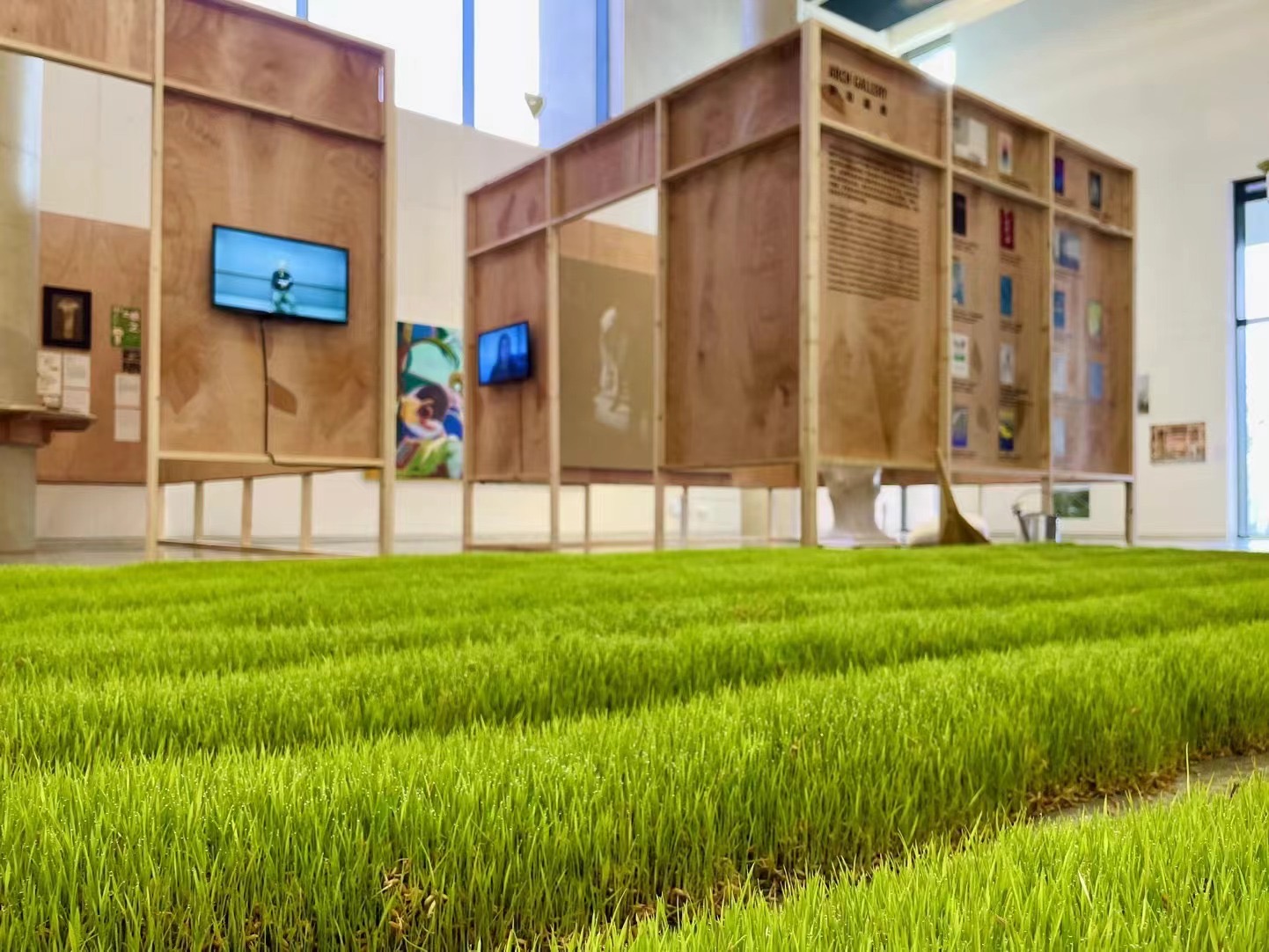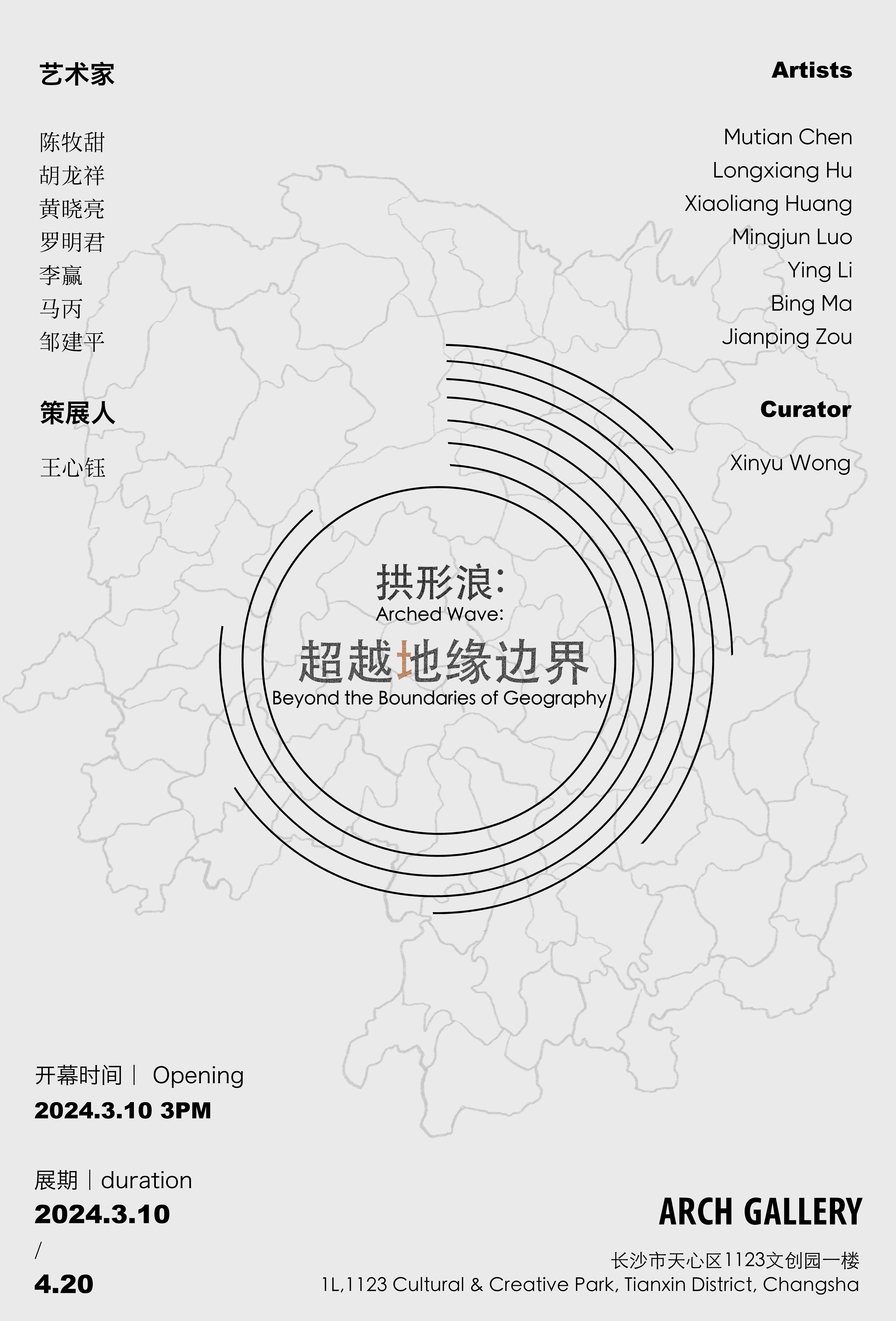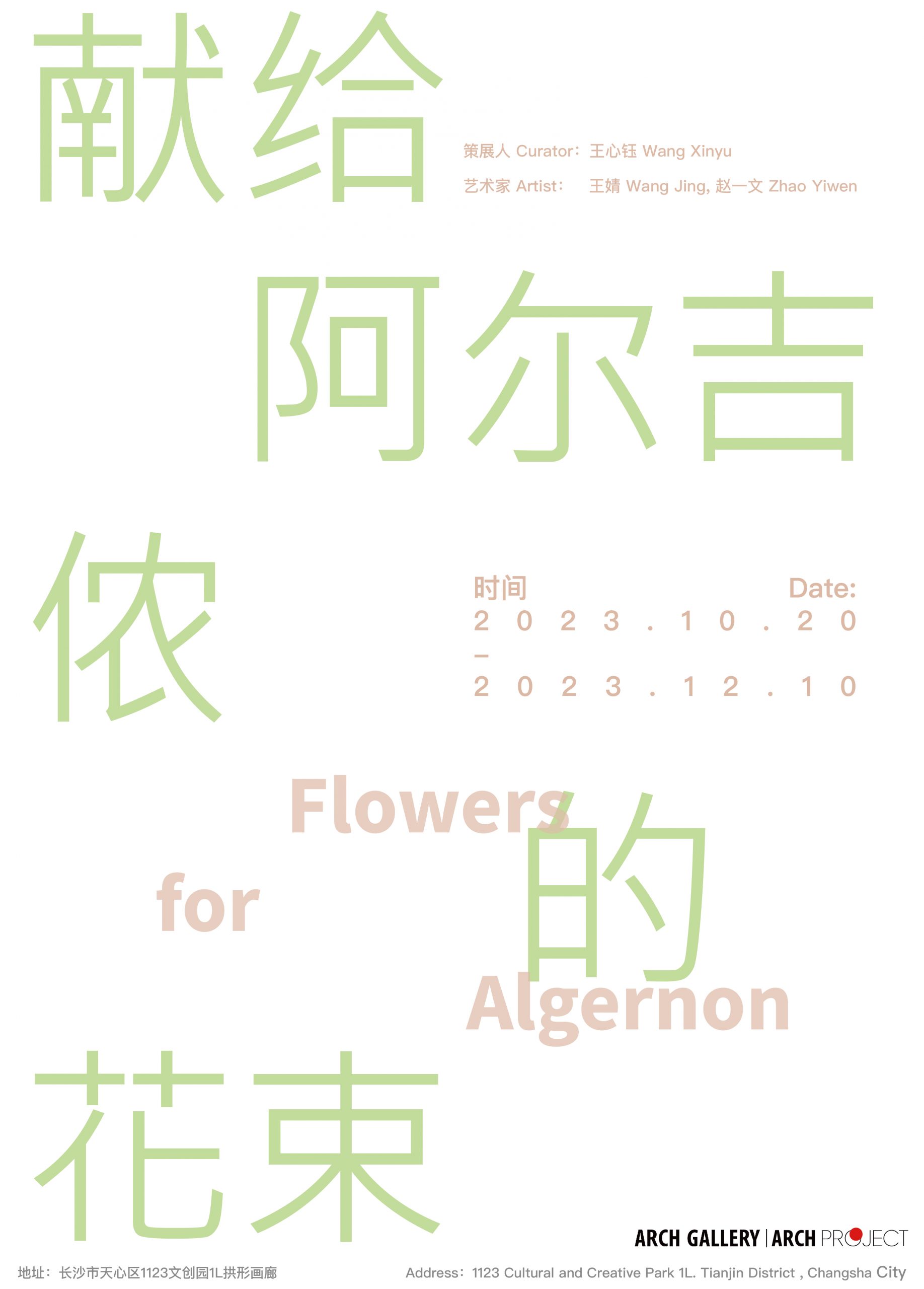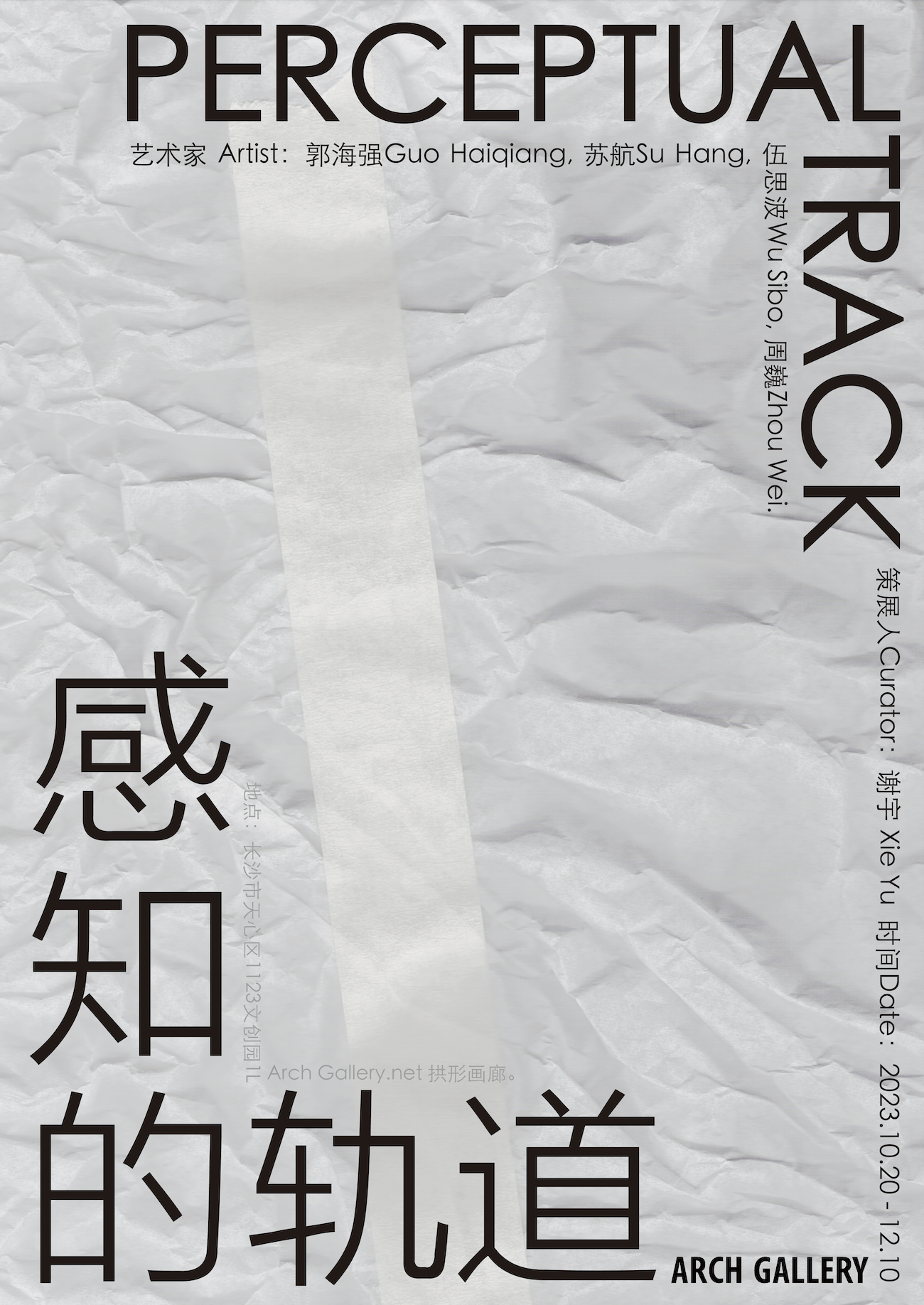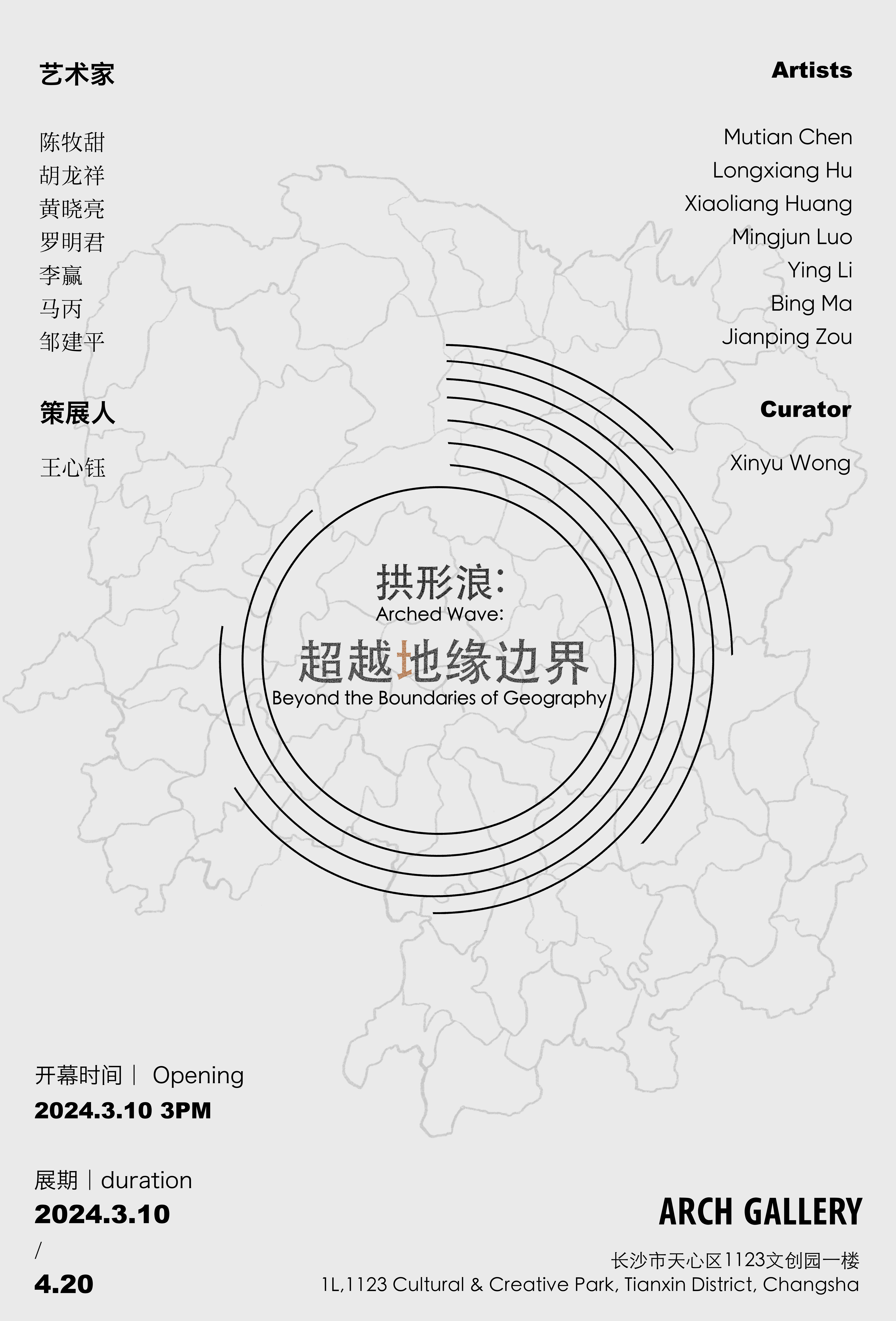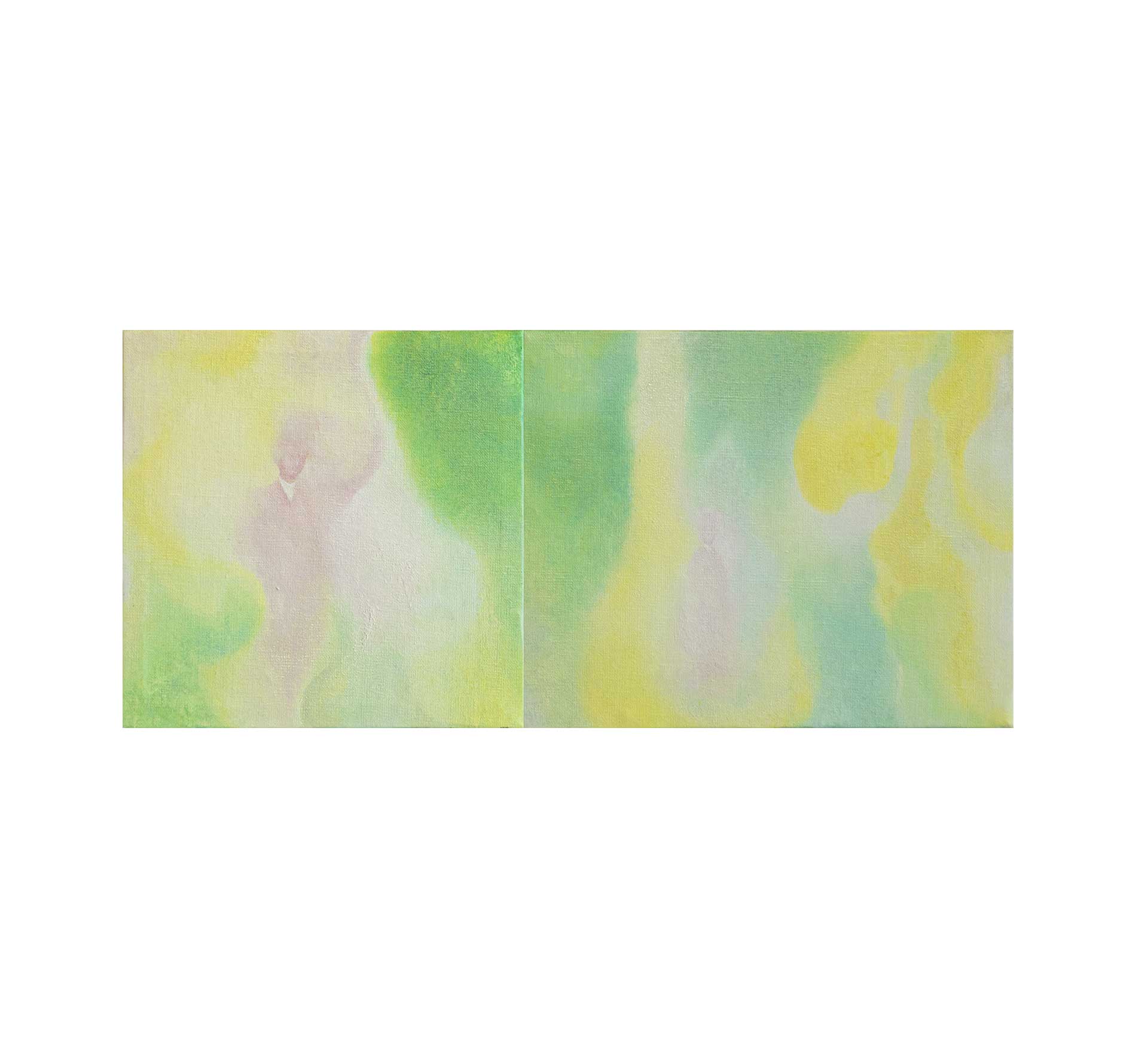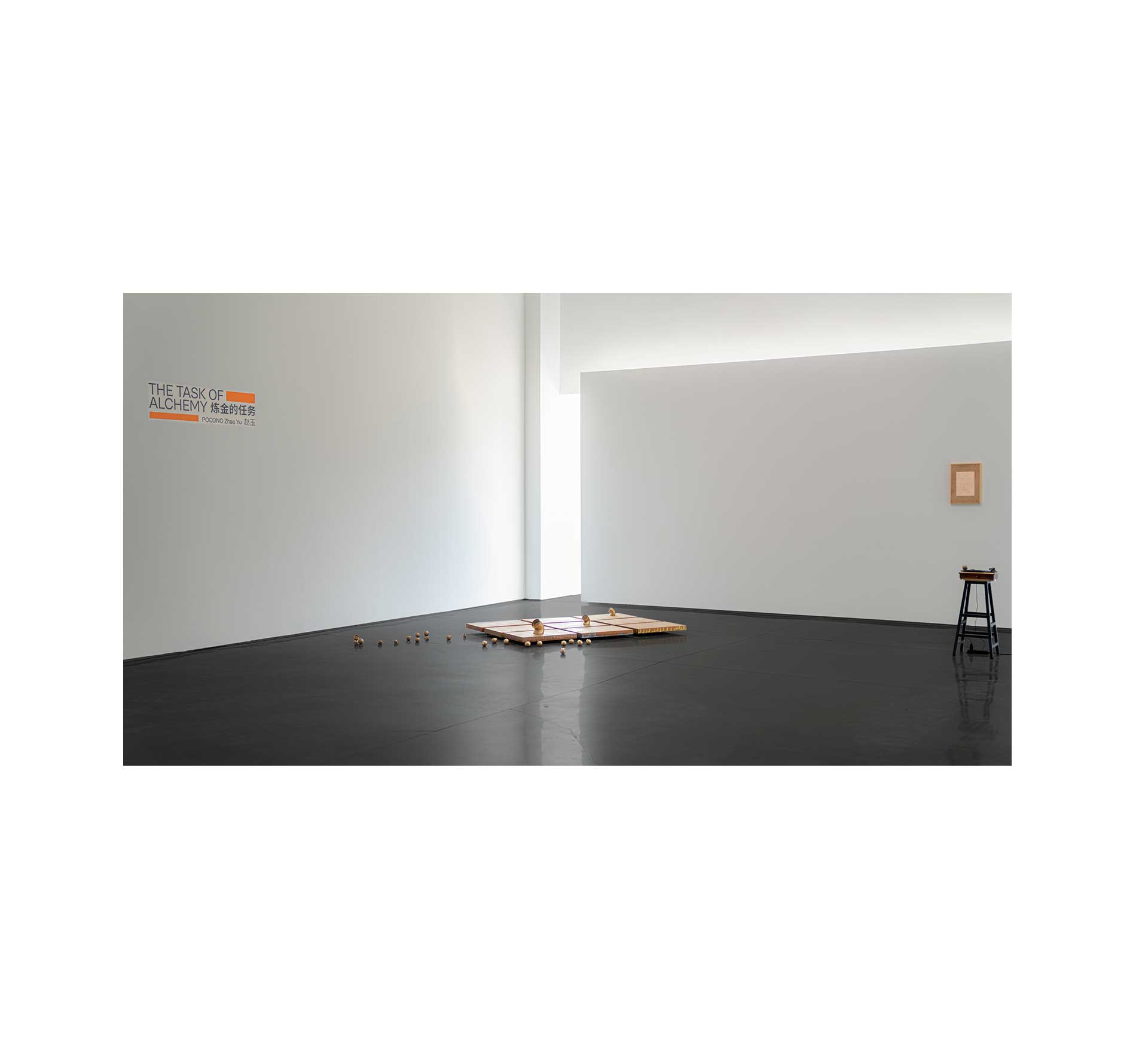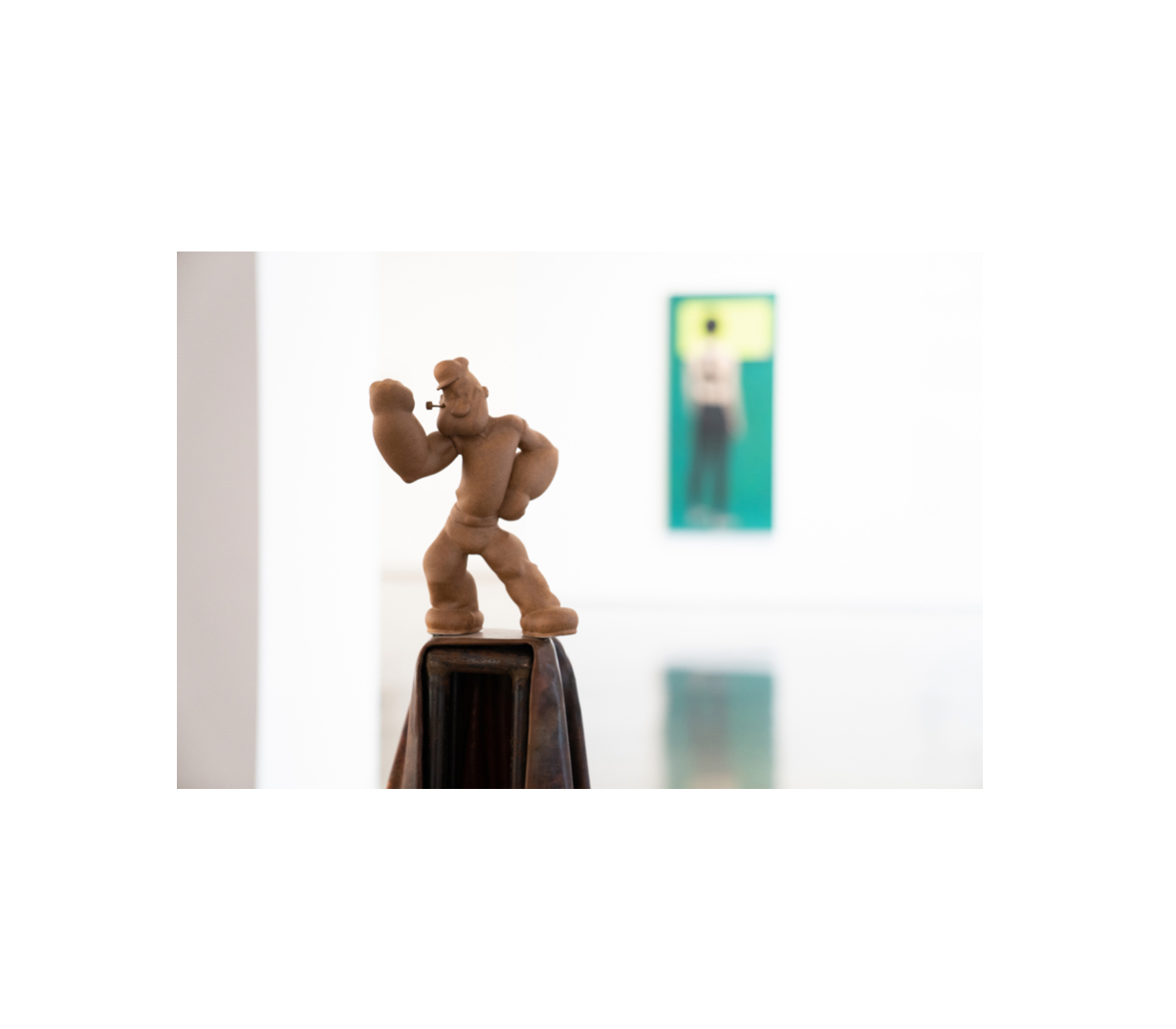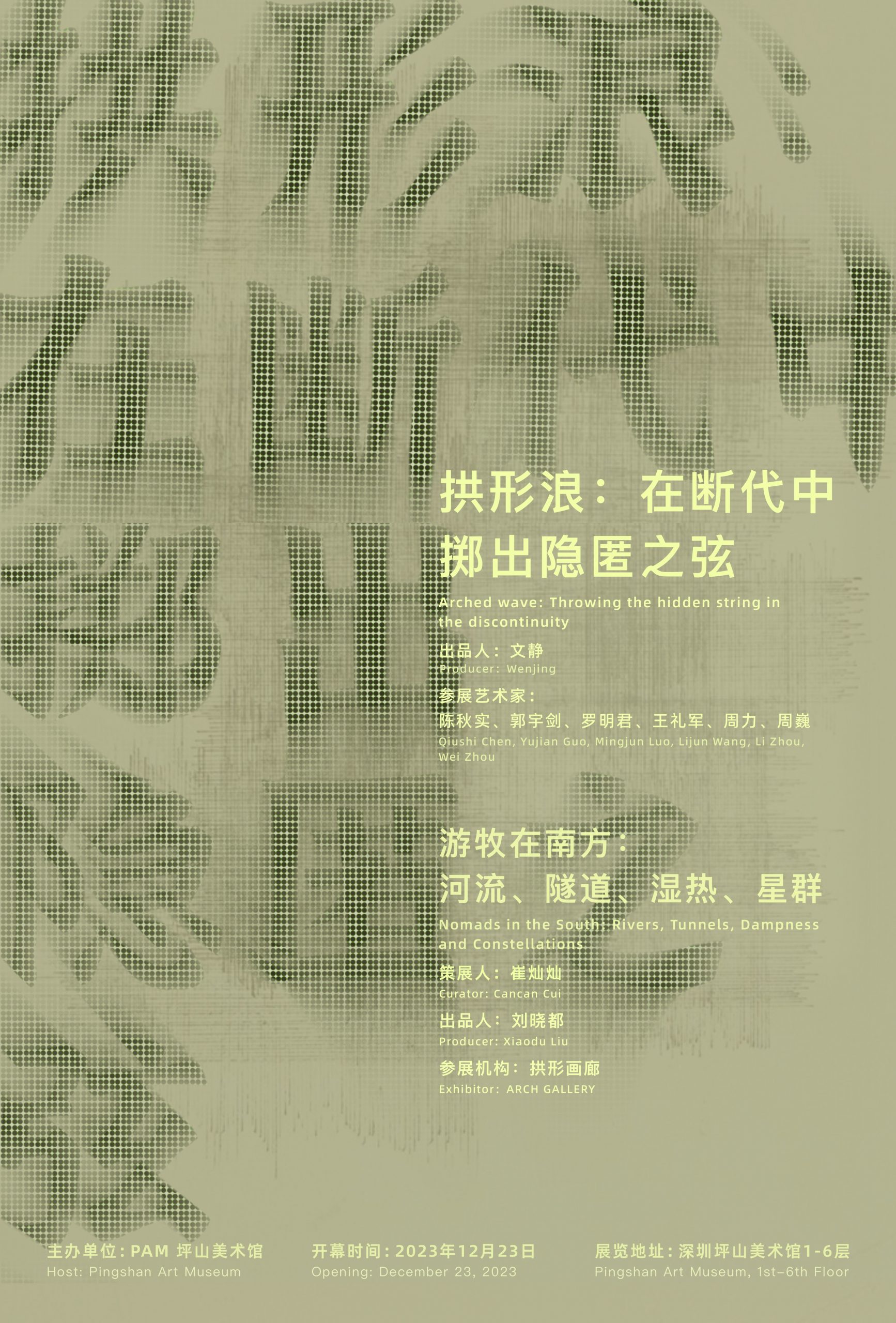
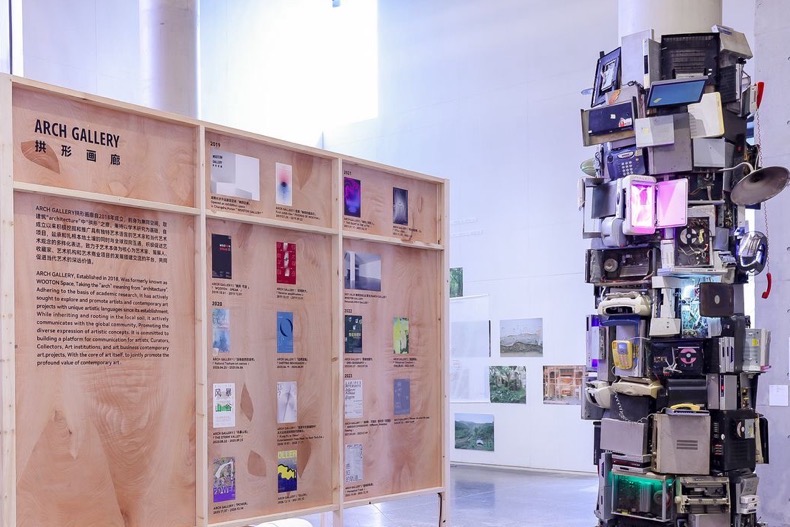
Exhibition with PAM
Arched wave: Throwing the hidden string in the discontinuity
ARCH GALLERY is honored to be one of the representatives of southern Chinese art institutions to participate in the annual exhibition of Pingshan Art Museum – Southern Nomads: Rivers, Tunnels, Moisture and Constellations.
“Southern Nomads” is a large-scale group exhibition of southern artists that Pingshan Art Museum will launch on December 23, 2023. This exhibition follows the “Shenzhen Contemporary Artist Series” planned by the art museum from 2021 to 2023. Behind the scenes, there is a larger, more vivid, humanitarian and severe investigation record and CB reconstruction.
The exhibition connects the southern regions and constructs more diverse meanings and possibilities through reorganization. As one of the representatives of the South, ARCH GALLERY is based on the soil of this film, hoping that the soul can translate and present the contemporary characteristics of Huxiang. Although Huxiang is at the vanguard of modern Chinese art history writing, its emergence The dynamic undercurrent of tension activates the trend of Chinese contemporary art,Throwing the hidden string in the discontinuity.
Host: Pingshan Art Museum
Exhibitor: ARCH GALLERY
Artists: Qiushi Chen, Yujian Guo, Mingjun Luo, Lijun Wang, Li Zhou, Wei Zhou
Opening: 2023.12.23
Address: Pingshan Art Museum, North District, Pingshan Cultural Cluster, Huide Road, Pingshan Street, Pingshan District, Shenzhen
Continuing the traditional literati style since the Song and Ming dynasties, while constantly initiating the transformation of modern and contemporary China, the cultural undercurrents of Hunan, though not at the forefront of the writing of modern and contemporary art history, activate and lead the contemporary art trends in China. From the transformative precursor of the O Art Collective to the prelude of the Chinese Modern Art Exhibition,Hunan, with its distinctive and pioneering attitude, provides spiritual motivation and cultural context for contemporary Chinese art.
Only in Chu is there talent, and it is flourishing here.The continuous hills and the Xiang River have enabled the artists here to inherit not only the resilience of traditional Hunan culture but also to be rooted in this region’s simple and unadorned folk culture. With their unique cultural identity and atmosphere, they have left an indelible mark on contemporary art. Of course, this is also the backdrop for the participation in the special exhibition of the Pingshan Art Museum, where the Arched Gallery serves as the voice and pioneer of contemporary art in Hunan.
The six artists participating in this exhibition were born in the Hunan region, spanning from the 1960s to the millennium generation. They not only present the journey of Hunan artists with different identities in the development of contemporary art but also demonstrate cultural experiences matching the progress of the times and the contrasting experiences of spatial displacement, revealing the contradictions in early identity recognition to the transcendence in the displacement and transformation. From the departure of the “O Art Collective” to the pursuit of a painting career in the West by Luo Mingjun, to the witnessing of the interactive mode of contemporary art between the two regions of Huguang by Zhou Li and Zhou Wei based at the Guangzhou Academy of Fine Arts, and to fully demonstrating the growth and development trajectories of young artists of different ages in China and internationally in recent years by Wang Lijun, Guo Yujian, and Chen Qiushi, the Arched Gallery attempts to delineate the specific and vivid trajectory of modern and contemporary art in Hunan from the dual threads of academic and historical perspectives.
Hunan artists were collectively absent in 1989, at the Chinese Modern Art Exhibition held at the China National Art Museum, which opened the contemporary ideological trend. Perhaps this was because the Hunan artists’ distinct personalities did not present a clear common feature in that historical context and were not recognized by history. However, looking at the present, “Southern” emphasis in Pingshan has once again become an important topic for contemporary art to continue its cultural logic. The mobility of artists between different locations, transcending geographical boundaries while still based on shared experiences, has built a dense network of interconnectedness. These cultural nomads have broken ground in Hunan with their unique individual experiences and forms of expression, and with the accumulation of temporal variables, they are composing different scripts. Nurtured locally, and then connected through displacement to external concepts, artists inherit the regional characteristics consciously or unconsciously, and continually explore, construct, and recreate.
Art is always evidence of the reality depicted. Based on this soil, we sincerely hope to translate and present the contemporary characteristics and historical potential of Hunan culture. The Arched Gallery is committed to the development of the local contemporary art ecosystem and better two-way communication with the global art market. We uphold a reflective curatorial attitude, conduct academic research and art collection on the development of contemporary art, and maintain creative speculation beyond the perpetual cycle of operations, narrating the rooted artistic experience.
About Artists
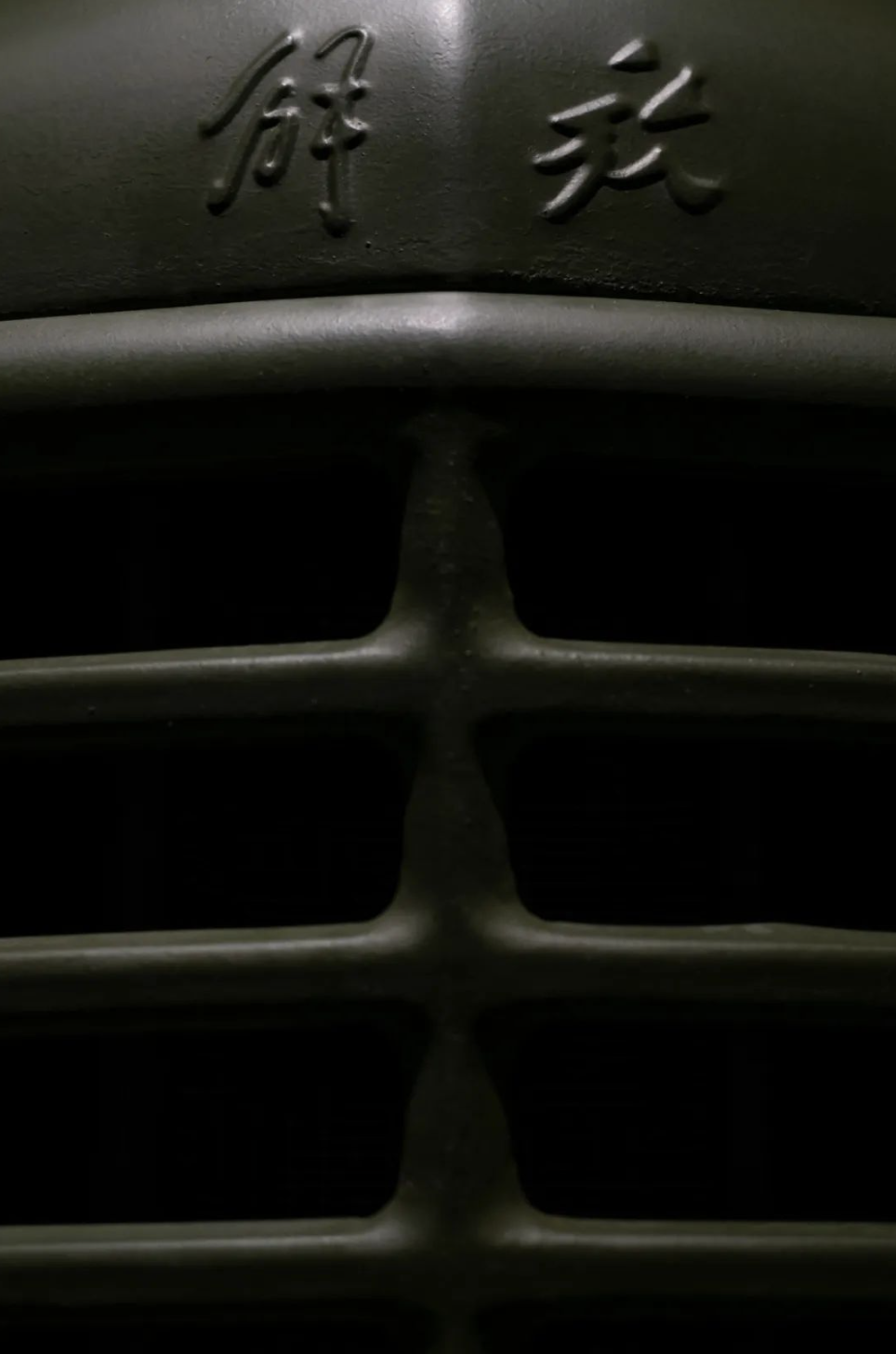
Stealth, 2022, Giclee print, 120 x 80 cm
Qiushi Chen was born in Changsha, Hunan in 1997. He graduated from the Experimental Art Department of the Glasgow School of Art and the Law and Philosophy Department of Southeast University. As a creator and theoretical researcher, his work focuses on contemporary images and image field practices, especially the latent and deformation of traditional ethics, politics, and emotional concepts in contemporary images and digital media experiences. In recent years, he has been shortlisted for the “Asian Pioneer Photographer Project” (2023), “Hou Dengke Documentary Photography Award” (2022), “PEP NEW TALENTS” (2020), etc. At the same time, he also serves as the editor of “Chinese Photography”, planning a number of academic topics such as “Technical Logic of Imagery” and “Photography Examination”.
 Inside and outside the arch, 2021, Oil on canvas, 90 x 60 cm
Inside and outside the arch, 2021, Oil on canvas, 90 x 60 cm
Yujian Guo was born in Changsha, Hunan in 1992. He graduated from the Painting Department of the Academy of Fine Arts in Florence, Italy in 2015. During creation, the artist does not intentionally design and arrange the graphic content in the picture. His understanding of painting is based on the act of painting itself. The accumulation of knowledge or theory is to make his intuition more intuitive. Simple and effective, he does not directly appropriate ready-made icons. Everything in the painting appears after he allows his intuition to lead him.
In Yujian Guo’s view, the process of painting is more important than being designed and step-by-step to achieve a certain effect. The charm of painting art is to present “intuitive timeliness” through human hands, and it can automatically express itself through various cultural contexts. There will be different works produced. Guo Yujian’s study in Italy helped him to understand Western classical art more deeply in the contemporary context. The artist combined his own aesthetic preferences, knowledge accumulation and painting skills to create a style of work that has both classical temperament and contemporary visual effects. Therefore, Yujian Guo The classical temperament revealed in his works is a combination of Chinese and Western origins.

Nightlife, 2012, Oil on canvas, 190 x 240 cm
Mingjun Luo was born in Hunan and received art education at the Academy of Fine Arts of Hunan Normal University from 1979 to 1983. He later stayed at the school as a teaching assistant and won the Hunan Provincial Award in 1984. In 1985, she founded the “O Art Collective” with other artists. In 1987 she moved to Switzerland and settled in Biel.
“Nightlife” is an oil painting from 2012. In the 1990s, due to her confusion about painting, she gave up realistic painting for nearly 12 years, and instead used rice paper, ink and other materials to create a series of installations and installation paintings. .Use the traditional culture that has been integrated into the blood to counter the sense of disorientation, or in other words, the antidote to difficulties. It wasn’t until 2008 that I finally dared to pick up oil paints again.
This work depicts a wedding party for friends, the newlyweds being very devout Catholics. After the solemn ceremony in the church, the newlyweds then had a joyful dinner and then a dance with crazy music. This scene attracted me from two aspects: we all live on the “stage” of tradition and contemporary times – each of us plays our own role on the stage of life. Since childhood, we have been bound by moral, cultural and other principles. In the ancient world theater full of code words, we have become a role subject to scrutiny and judgment by others. On the contrary, we are spectators of other people’s lives. Secondly, that beam of white light makes the dark part full of reverie, and it will suit my way of using the canvas as a dark part to leave black. When viewed from a distance, the shapes and layouts of light and dark give people the illusion of photographic images, and photography is indeed one of my creative sources. But when we get closer to the canvas, what we see is a sense of leisurely painting, with outlines simply appearing on the canvas like traces of light and shadow. Through these hints of reality and emptiness, light and shadow, presence and absence, virtuality and reality, the mysterious part of the work is highlighted, further inspiring the imagination of the viewer.
 Monologue, 2021, Plaster, iron wire
Monologue, 2021, Plaster, iron wire
Lijun Wang was born in Liling, Hunan in 1982. He graduated from the Sculpture Department of the Central Academy of Fine Arts in 2008, and received his master’s degree and doctorate from the Central Academy of Fine Arts in 2013 and 2022 respectively. Currently working and living in Beijing and Tianjin.
The artist’s artistic practice uses sculpture and installation as his main creative media, starting from his daily experience to explore the physical space of materials and the material space of self-survival. His works discuss the contradiction between the permanence of objects themselves and the transience of perception, exploring the way objects exist in space and perception. The artist attempts to re-perceive and gain insight into the relationship between the individual and the surroundings in the spatial folds of individual existence.
 Tracing Peach Blossom Spring, 2022, Cloth surface comprehensive material, 180 x 180 cm
Tracing Peach Blossom Spring, 2022, Cloth surface comprehensive material, 180 x 180 cm
Li Zhou graduated from the Oil Painting Department of Guangzhou Academy of Fine Arts, China in 1991. Lived and worked in France from 1995 to 2003. Since 2012, he has been employed as a visiting professor at Guangzhou Academy of Fine Arts. From 2019 to present, he serves as the director of the Fifth Studio of the Oil Painting Department of Guangzhou Academy of Fine Arts and the academic committee member of Pingshan Art Museum.
For artists, the color information stored in memory is often combined with specific experiences or reactions in the metaphorical field, and the works evoke automatic and effective psychological cognition in the viewer. Zhou Li creates pure poetry on complex canvases, using dynamic brushstrokes to lead people to a deeper space of thinking. Through the combination of five colors, the variety of intermediate colors and gray colors is increased to continuously adjust the tonality and depth you want to achieve. His “Peachland” landscape is an imagined and constructed space, with rich colors and various lines arranged on the picture. These dynamic brushstrokes sublimate a specific landscape or specific personal experience. The multi-level processing of the picture – whether it is applied on a large area with diluted paint, or partially modified with an airbrush, or lines randomly shuttled between them, each work with dense colors creates a light, transparent and flying light. The visual effect of the film shifts the viewer’s viewing experience from memories and specific objects to a “surreal” level of perception like “Peach Blossom Spring”.
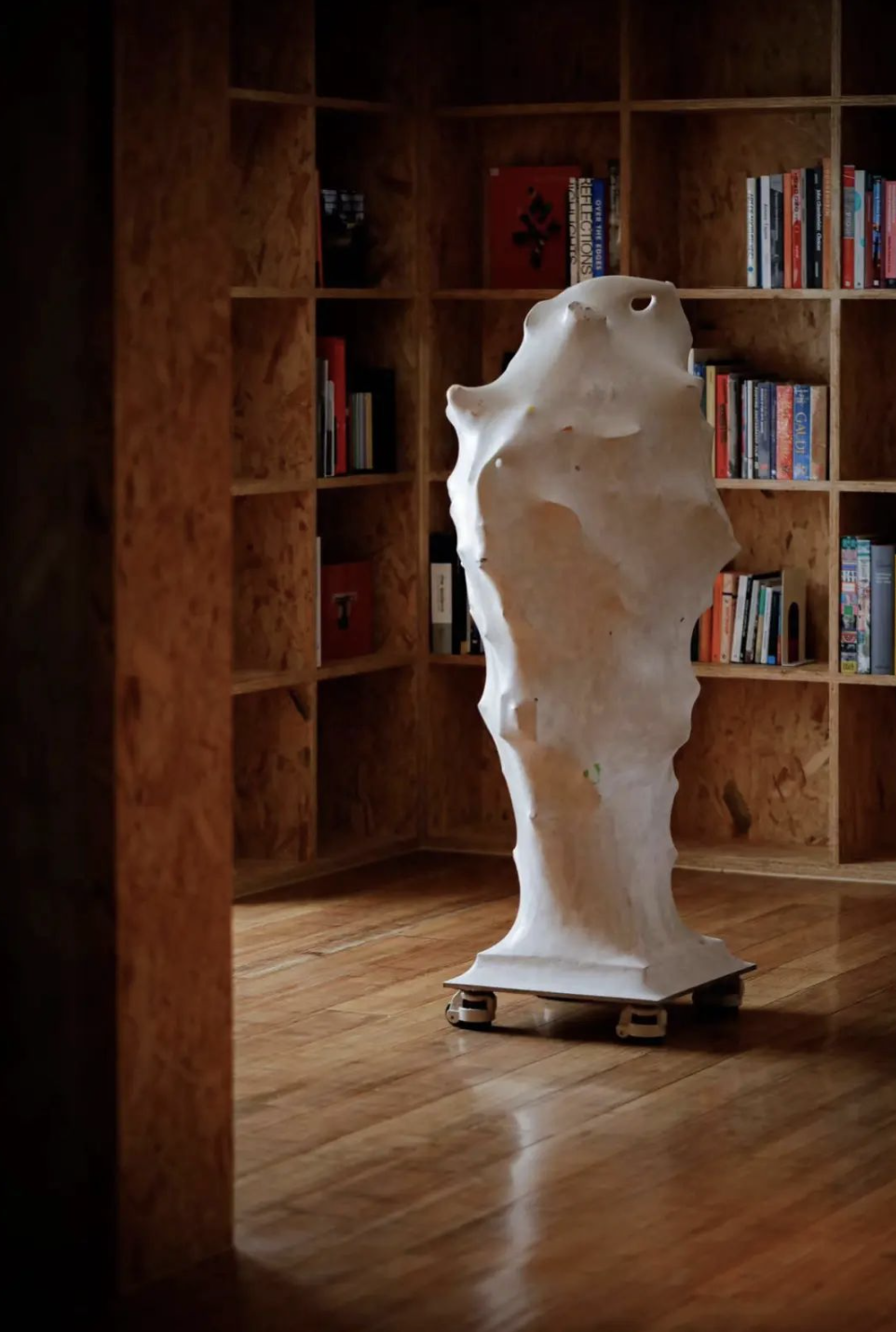 Creation, 2021, Cloth surface comprehensive material, 50 x 50 x 120 cm
Creation, 2021, Cloth surface comprehensive material, 50 x 50 x 120 cm
Wei Zhou was born in Hengyang, Hunan, and graduated from Guangzhou Academy of Fine Arts. He currently works and lives in Guangzhou and Changsha. At the 18th Venice International Architecture Biennale in 2023, we will participate in the theme exhibition area of the China National Pavilion.
The artist faces problems at different stages of life and forms a continuous series of creations through recording and transformation. “Reflection” Through long-term observation and recording, we create a series of problems that accompany our daughter’s growth. Thinking and transformation of the relationship between life and art from the dual identity of being a father and an artist. “Construction” launches a series of creations around “objects”. The creative method forms new “objects” through the connection of objects. Thinking about how to remember the past and the future is the clue to creation.
Wei Zhou collected used everyday items and connected them with white cement and grc plaster. Used items will one day be buried in the ground and become fossils, forming a deposit of memories. The artist’s works include the concepts of time and history, as well as the concept of preserving memory. The presentation of the final work also incorporates some of the landscape artistic conception in Chinese culture.
Installation view
